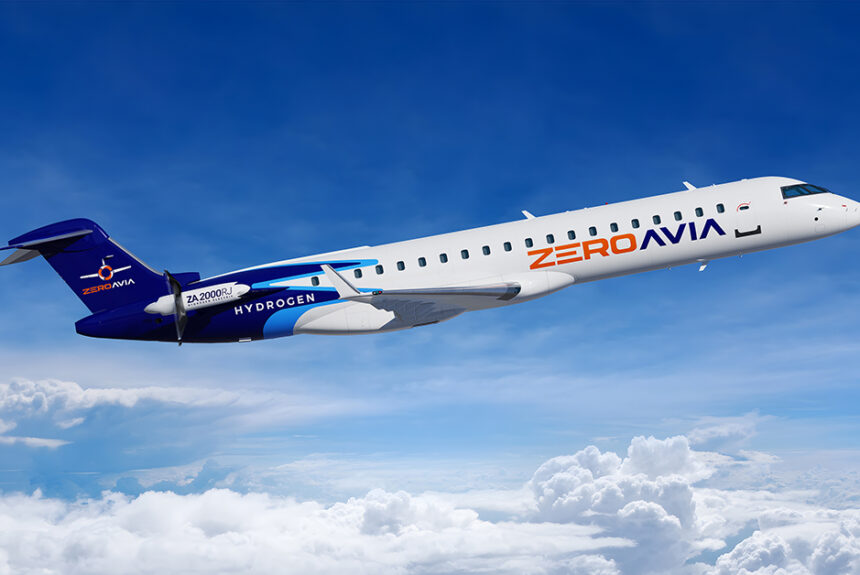The aviation sector accounts for an estimated two percent of all global carbon dioxide (CO2) emissions, according to data from the International Energy Agency. Since the mid-1980s, emissions from international air travel have doubled to reach more nearly 800 million metric tons of CO2 in 2022, which is the emissions equivalent of 178 million cars. As the aviation industry rebounds from the aftermath of the post-COVID-19 decline in air travel demand, innovative and ambitious strategies are imperative for decarbonization. One private company paving the way is hydrogen aviation startup ZeroAvia.
>>>READ: Graphyte: the Biomass Carbon Removal Solution on Everyone’s Radar
Hollister, CA-based ZeroAvia is a zero-emission aviation company specializing in developing hydrogen-electric engines for aircraft. Engines fueled by hydrogen utilize fuel cells to produce electricity, which is then used to power electric motors to turn the aircraft’s propellers. The only byproduct in the entire process is water, making hydrogen planes a sustainable alternative to traditional jet engines powered by kerosene. The concept is similar to that of a hydrogen car.
ZeroAvia’s sustainable hydrogen fuel is sourced on site via modular electrolyzers that split water into their respective elements, hydrogen and oxygen. According to ZeroAvia, their green hydrogen will be stored in high-pressure tanks near or at airports. Compared to conventional turbines, the hydrogen power system results in 90% lower lifecycle emissions and 40% lower operating costs. Not to mention no noxious greenhouse gases like carbon dioxide and nitrogen oxides are released in the process.
In December 2022, ZeroAvia got the green light from regulatory authorities to test fly some of its prototype aircraft. One month later, the company made aviation history as it successfully piloted the world’s largest aircraft powered by a hydrogen-electric engine. The historic first flight marks a milestone as ZeroAvia heads towards full commercial certification of its design. The hydrogen-electric aircraft developer aims to kickstart commercial operations in 2025, with eventual plans to roll out 40- to 80-seat planes by 2027 and to charter 200+ passenger flights by 2040, although the focus for now has been on regional and short-haul flights.
“This is a major moment, not just for ZeroAvia, but for the aviation industry as a whole, as it shows that true zero-emission commercial flight is only a few years away. The first flight of our 19-seat aircraft shows just how scalable our technology is and highlights the rapid progress of zero-emission propulsion,” Val Miftakhov, ZeroAvia Founder & CEO, said in an announcement.
>>>READ: With Pivot Bio, Farmers Can Say Goodbye to Noxious Nitrogen Waste
In May, ZeroAvia unveiled a historic partnership with Alaska Airlines to develop HyperCore: the world’s largest zero-emission aircraft. In addition to funding from Alaska Airlines, the startup is backed by aerospace giant Airbus, the UK government, and the Amazon Climate Pledge Fund. Bill Gates’s Breakthrough Energy Ventures is also a major donor, alongside United and American Airlines, which have also poured funding into the company (the airlines have preordered more than 1500 of ZeroAvia’s engines).
Since its founding in 2017, ZeroAvia has secured an impressive $256.7 million in funding.
“This is only the beginning – we are building the future of sustainable, zero climate impact aviation. Our approach is the best solution to accelerate clean aviation at scale,” Miftakhov says.
Nathalie Voit is a freelance content creator and a graduate of the University of Florida. She is an alumni of The Heritage Foundation’s Young Leaders Program.
The views and opinions expressed are those of the author’s and do not necessarily reflect the official policy or position of C3.
